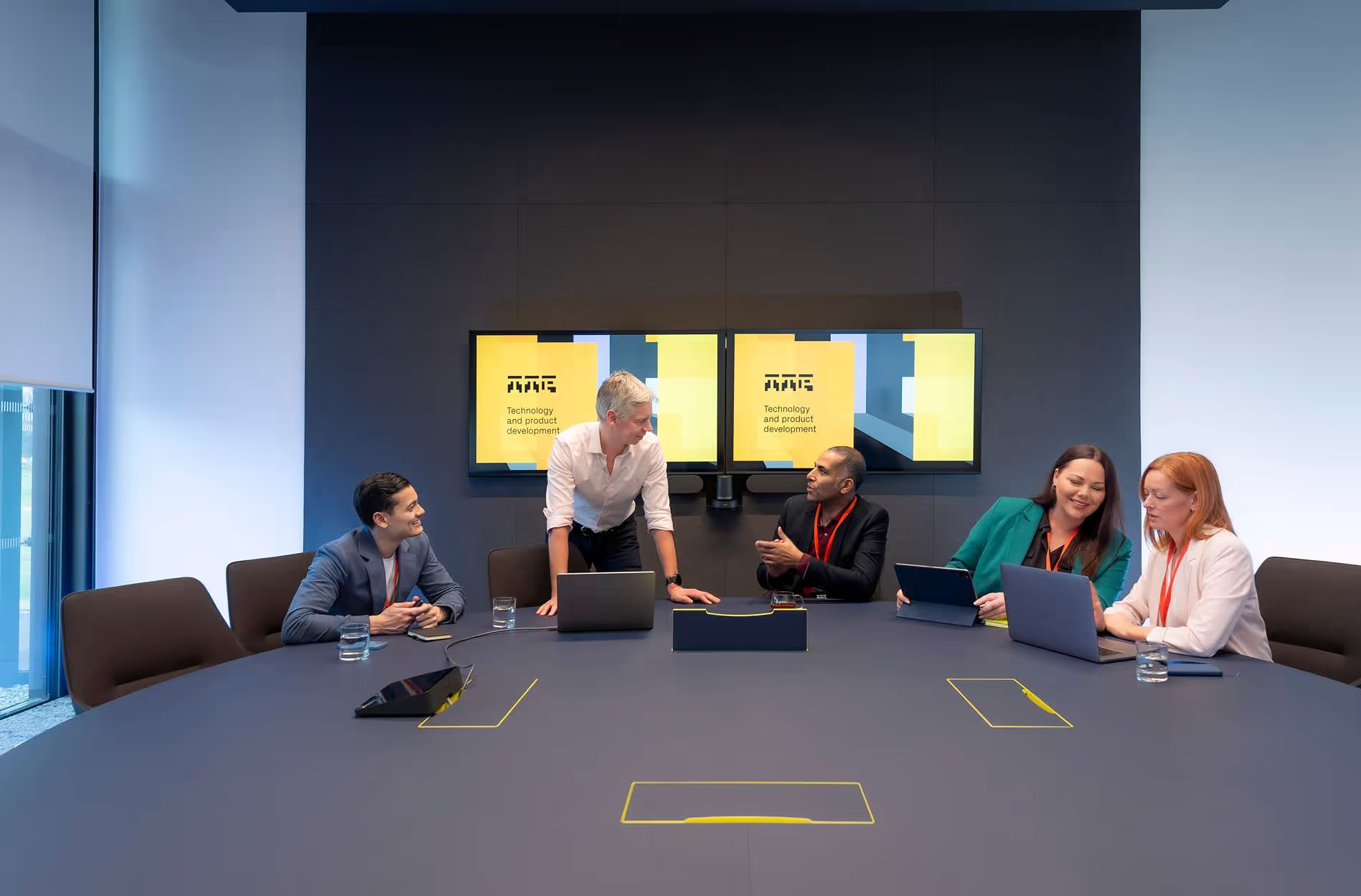
Surgical intervention and imaging
Groundbreaking solutions shaping the future of medical procedures.
With a track record spanning more than 35 years, we can help you accelerate bold ideas into market-ready surgical solutions. From high-precision robotics to smart medical imaging tools, our surgical device experts combine deep industry expertise with agility and ingenuity to address the deepest technical challenges, helping you develop bespoke technologies and solutions that drive commercial success. Leveraging our scientific and engineering expertise and multidisciplinary background, we'll turn your technology aspirations into real-world opportunities.


Transforming surgical vision into commercial reality
In an industry where usability, performance and safety are paramount, our Surgical Intervention and Medical Imaging team excels in delivering robust innovations in medical procedures - and their guidance systems - that seamlessly integrate with existing client systems.
We are uniquely positioned to uncover and develop transformative opportunities that meet the complex demands of modern surgical environments. Whether it's designing endoluminal robots or managing the summative HF test of an ultrasound imaging system, our solutions are tailored to meet evolving surgical challenges head-on - and designed with user-centric design in mind, to ensure seamless integration and ease of use.
Our agile approach, combined with our experience, enables us to deliver rapid advancements that improve both clinical outcomes and surgical efficiency. Clients choose us not only for our technical knowledge and experience in device design and development, but also for our ability to manage system interdependencies, identify risks early and manage trade-offs effectively to advance concepts through to final product.
Our multidisciplinary team brings full-cycle product development expertise, ensuring that even the most complex projects are executed with speed and precision, aligning with our ISO 13485 accredited development process.
Drawing on our regulatory expertise, we ensure that every innovation not only meets compliance requirements but also accelerates pathways to approval.
Our mission is to innovate the next generation of surgical systems by developing and integrating novel technologies into products that meet the rigorous standards of the industry.

The team at TTP has done a fantastic job expediting the journey to commercialisation of our prototype. We are excited about the potential for Seracam to improve patients’ lives.” – Dr Paul Cload, Chief Marketing Officer at Serac Imaging Systems.
Dr Paul Cload
CEO
,
Serac Imaging Systems

I’ve had the opportunity to work closely with TTP over the past 20 years, focused on solving very diverse and complex engineering challenges, and required to deliver breakthrough product technology to the market. They’ve been incredible partners and fully integrated members of our R&D team and have shared tremendous passion, energy, and drive to succeed to help support our physicians and their patients.
Joshua Stopek
VP: R&D
,
HistoSonics Inc

Working with TTP has been transformative for our business. Their unparalleled expertise, innovative solutions, and commitment to excellence have been key to our success. We're proud to partner with a firm that consistently delivers exceptional results.
David Nolan
President
,
Balmoral Medical LLC


Surgical product development: less-invasive, greater impact
As medical procedures become less invasive, the tools and instruments used must evolve to handle increasing complexity in smaller form factors. This relies on advanced electromechanical design, thoughtful architecture, and enabling technology, and a focus on user-centric design to create intuitive, effective tools.
TTP combines technical, biomedical and commercial insights to help migrate surgery into minimally invasive surgery and beyond, into endoluminal technology and even extracorporeal ablations.
In cancer treatment, TTP is creating new medical technology for prostate cancer, colon cancer, and lung cancer, helping clinicians target tumours with greater accuracy. In thrombectomy and stroke treatment, we are creating new imaging modalities, fluidic solutions and novel impactful technology integrations to enhance procedural outcomes. In endoscopy, we are solving the “dirty endoscope” problem, introducing entirely new product categories. And in orthopaedics we are minimising trauma in implantation surgeries by shrinking the size of robots to make procedures less invasive and more precise.
Speak to a surgical intervention and imaging expert today to find out how we can turn your bold ambitions into breakthrough solutions and redefine the future of the operating room.


Empowering surgeons with advanced medical imaging technologies
At the heart of every successful intervention lies accurate and reliable imaging—whether it’s the real-time feedback from Ultrasound, the detailed mapping provided by CT and MRI, or the enhanced insights from emerging modalities like multispectral imaging. Existing solutions are evolving: ICG fluorescence imaging is giving way to dye-free critical structure detection; and laparoscopic ultrasound is becoming closely integrated into laparoscopic instruments.
Our medical imaging product development consultants specialise in creating and integrating these technologies to ensure that surgeons have the vision they need to perform interventions or make a diagnosis, speeding up procedure times and ultimately improving patient outcomes.
TTP’s Software Defined Ultrasound (SDU) ultrasound imaging system is an example of a platform enabling technology. As a modular, expandable, and versatile reference design, it enables developers to accelerate their product journeys, offering a flexible way to create novel ultrasound solutions at a lower cost in the lab, and then translate those into medical products.
With these cutting-edge imaging solutions driving surgery, we help transform patient outcomes in every procedure.
Discover how TTP’s Software Defined Ultrasound (SDU) accelerates ultrasound product development.


Innovating smart tools for critical structure avoidance
Navigating complex access routes in minimally invasive surgery is crucial to avoiding unintended damage to critical structures like nerves and major blood vessels. TTP is pioneering a range of technologies for critical structure avoidance.
Our advanced, tool-tip sensing solutions provide real-time feedback in a format that is intuitive and actionable, empowering clinicians to proceed with confidence, knowing they’re working safely and accurately.
Whether electrical, chemical, mechanical, thermal, optical or otherwise, our expertise in integrating sensors will help you gather key data tailored for minimally invasive environments – while maintaining scalability and cost-efficiency.
We leverage our in-house micro-fabrication facility and clean rooms to create small-form factor sensors ideal for deployment at tool tip, even on extremely small bore or flexible devices, to ensure they meet the specific demands of surgical applications.
One of our recent innovations is a 200µm all-optical pressure sensor, designed for use in tightly constrained anatomies. Mounted at the tip of a fiber optic, this sensor’s design stems from TTP’s advanced multi-physics modelling and rapid MEMS prototyping capabilities, showcasing our commitment to precision and reliability in surgical tools.
Additionally, our work in tissue identification includes micro-electrodes on needles using Electrical Impedance Spectroscopy (EIS). By applying fine-scale electrodes with advanced inkjet printing over curved surfaces, we enable novel placements that go beyond the limitations of traditional techniques. These electrodes interface seamlessly with our EIS system, offering enhanced tissue identification capabilities crucial for high-stakes surgical contexts.
In collaboration with our clients, we’re delivering innovative sensing technologies that empower clinicians to navigate complex surgical landscapes safely and precisely, setting new standards for accuracy and patient care in minimally invasive procedures.
Watch the interview with TTP’s head of Surgical Intervention and Imaging, Paul Galluzzo, as he gives his opinion about the impact of new technologies on surgical robotics, the ability of new entrants to compete with Intuitive in laparoscopic robotics, and the believability of value propositions in different robotics applications.


Delivering intuitive surgical robotics for high-impact, next-generation solutions
Our expertise in surgical robotics enables us to navigate the trade-offs and challenges in both surgical and diagnostic systems, whether developing core components, subsystems, or complete robotic platforms. By leveraging the latest technologies, we accelerate development across diverse fields like laparoscopy, endoscopy, ophthalmology, and orthopaedics.
Our projects include flexible robotic instruments, custom imaging systems, haptic control interfaces, and integrated motor chassis.
In one landmark project, we developed an endoluminal robotic platform featuring two 6 DoF robotic tools with cable actuation for intuitive humanoid control. This platform enhances dexterity and usability, demonstrating TTP’s capability in tackling challenges like miniaturisation, actuator selection, and motion isolation to democratise interventional endoscopy.
Our rigorous development process integrates a clinical network to ensure that our solutions meet user needs while balancing regulatory, sterilisation, intellectual property, and commercial considerations.
Our core capabilities include electromechanical design, miniaturisation, custom user interfaces, integrated sensing, and compact optics - all crafted to drive safe, effective robotic systems for enhanced surgical outcomes.
How we can help
End-to-end medical device development
From opportunity discovery and concept ideation to prototyping, regulated design development, and final transfer to manufacture, TP provides comprehensive support at every stage of surgical and imaging device development, ensuring a streamlined process that accelerates time-to-market and meets regulatory standards.

Advanced sensor integration for next-generation devices
We specialise in adapting cutting-edge sensing technologies—optical, thermal, strain, pressure, voltage, impedance, and ultrasound—into radically new applications, expanding product portfolios with enhanced features. Our expertise allows us to integrate these advanced sensors into existing interfaces and product profiles, ensuring compatibility while delivering innovative capabilities for next-generation medical devices.

Innovating endoscopic imaging solutions
Our expertise, reference designs, and ISP protocols make it easier than ever to develop custom, small-bore, and tightly integrated imaging systems, lowering the barriers to entry and enabling cutting-edge endoscopic innovation.

Enhancing surgical navigation
TTP brings deep expertise across disruptive navigation technologies, including proprietary EM navigation, EIT mapping systems, and MR headsets. Leveraging our robust theoretical modelling and in-house R&D prototyping labs, we develop navigation solutions that are not only highly functional but also adaptable to evolving surgical needs, enabling rapid adoption and customisation.

Advancing ultrasound solutions
Our comprehensive capabilities span simulation, microfabrication prototyping of transducers, sensor head design and assembly, drive and receive electronics, image signal processing, and rigorous testing and characterisation. We offer a streamlined, cost-effective pathway for the rapid development of ultrasound-enabled devices, accelerating your entry into the market with precision and efficiency.

Improving surgical visualisation
Harnessing our expertise in augmented and mixed reality, we design advanced guidance systems that provide real-time, intraoperative visual inputs and enhance surgical precision through accurate positioning, empowering clinicians with unparalleled insight during complex procedures.

Comprehensive system level design
From the small detail to the big picture, TTP has the expertise to address every aspect of complex developments, providing holistic oversight to manage projects at the system level. Our integrated approach minimises costly design revisions by bridging gaps between isolated design silos, ensuring seamless and efficient project execution.

Regulatory expertise in medical device development
We help you navigate the complex regulatory landscape with confidence, preparing robust design history files and ensuring compliance with global standards. Our ISO 13485-certified quality system and deep technical expertise bridge the gap between engineering and regulatory submission, streamlining approval processes for pharmaceutical and medical device companies.

End-to-end medical device development
From opportunity discovery and concept ideation to prototyping, regulated design development, and final transfer to manufacture, TP provides comprehensive support at every stage of surgical and imaging device development, ensuring a streamlined process that accelerates time-to-market and meets regulatory standards.

Advanced sensor integration for next-generation devices
We specialise in adapting cutting-edge sensing technologies—optical, thermal, strain, pressure, voltage, impedance, and ultrasound—into radically new applications, expanding product portfolios with enhanced features. Our expertise allows us to integrate these advanced sensors into existing interfaces and product profiles, ensuring compatibility while delivering innovative capabilities for next-generation medical devices.

Innovating endoscopic imaging solutions
Our expertise, reference designs, and ISP protocols make it easier than ever to develop custom, small-bore, and tightly integrated imaging systems, lowering the barriers to entry and enabling cutting-edge endoscopic innovation.

Enhancing surgical navigation
TTP brings deep expertise across disruptive navigation technologies, including proprietary EM navigation, EIT mapping systems, and MR headsets. Leveraging our robust theoretical modelling and in-house R&D prototyping labs, we develop navigation solutions that are not only highly functional but also adaptable to evolving surgical needs, enabling rapid adoption and customisation.

Advancing ultrasound solutions
Our comprehensive capabilities span simulation, microfabrication prototyping of transducers, sensor head design and assembly, drive and receive electronics, image signal processing, and rigorous testing and characterisation. We offer a streamlined, cost-effective pathway for the rapid development of ultrasound-enabled devices, accelerating your entry into the market with precision and efficiency.

Improving surgical visualisation
Harnessing our expertise in augmented and mixed reality, we design advanced guidance systems that provide real-time, intraoperative visual inputs and enhance surgical precision through accurate positioning, empowering clinicians with unparalleled insight during complex procedures.

Comprehensive system level design
From the small detail to the big picture, TTP has the expertise to address every aspect of complex developments, providing holistic oversight to manage projects at the system level. Our integrated approach minimises costly design revisions by bridging gaps between isolated design silos, ensuring seamless and efficient project execution.

Regulatory expertise in medical device development
We help you navigate the complex regulatory landscape with confidence, preparing robust design history files and ensuring compliance with global standards. Our ISO 13485-certified quality system and deep technical expertise bridge the gap between engineering and regulatory submission, streamlining approval processes for pharmaceutical and medical device companies.

Our approach and capabilities
We deliver across the entire life of a project, from opportunity discovery to production engineering. Discover how our interdisciplinary teams of experts collaborate to tackle the toughest product development challenges.
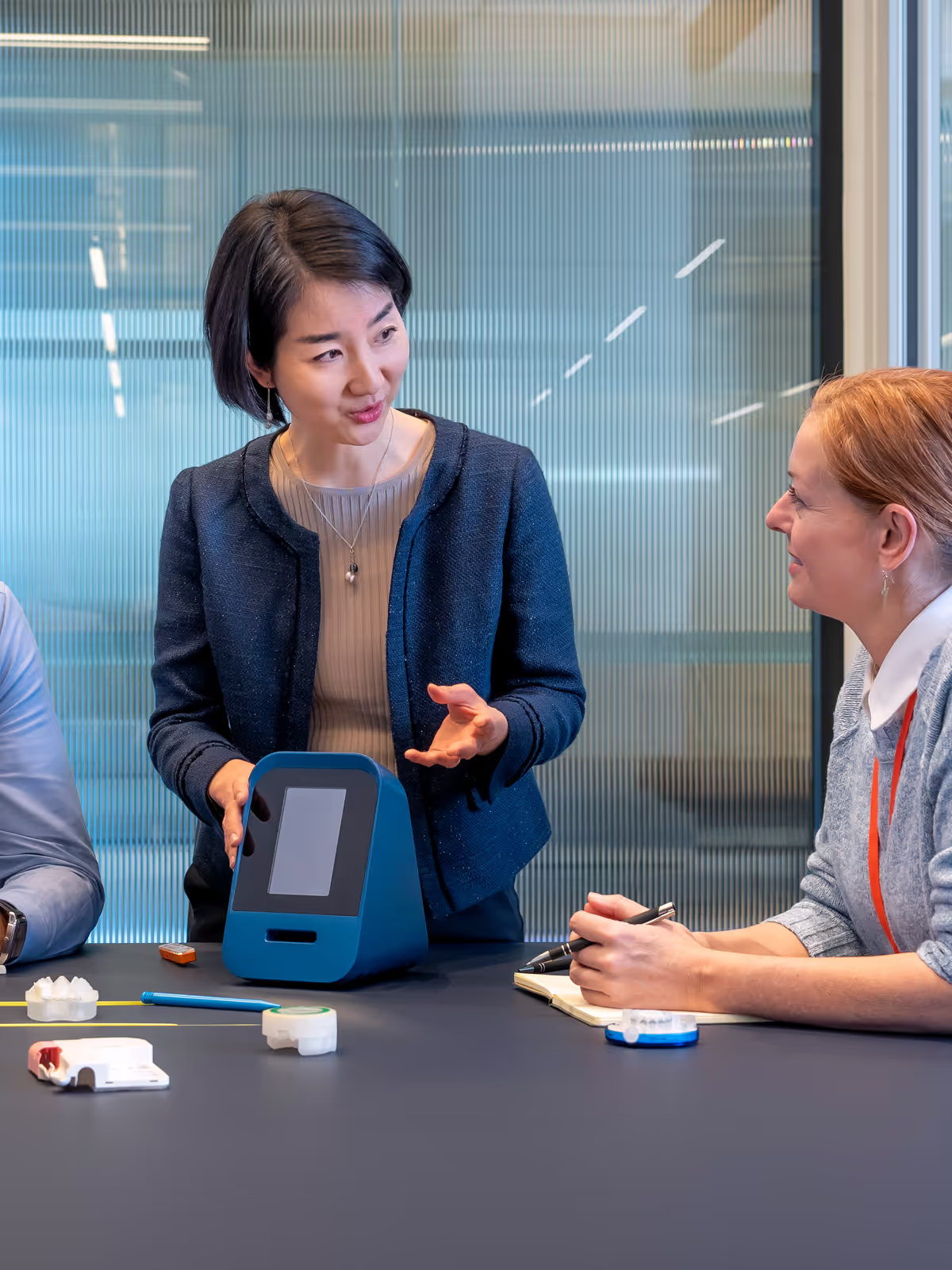
Our campus and facilities
Our award-winning campus has been designed with a clear vision. To create a space which can support our people and our clients as we develop and deliver the very best technology solutions.


Software capability at TTP
Engaged in all stages of software and product development, our software capability at TTP covers the full spectrum—from in-depth analysis and system architecture to prototype design, implementation, and test development.
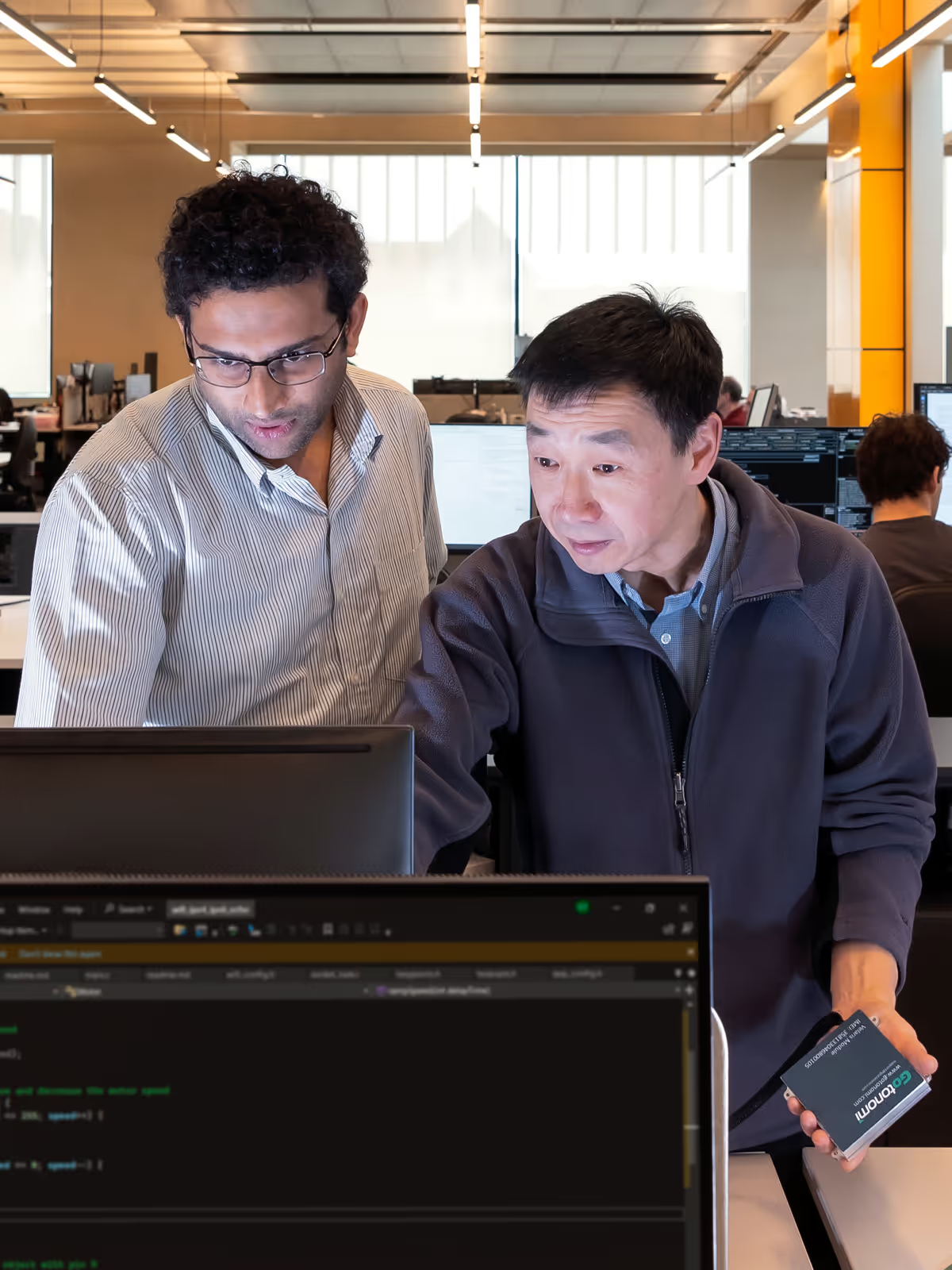
Manufacturing capability at TTP
Working seamlessly with our development teams, we take clients' products through prototype builds, clinical trials, pilot manufacture and more. Using TTP Manufacturing reduces uncertainty, risk and time to market for our clients.
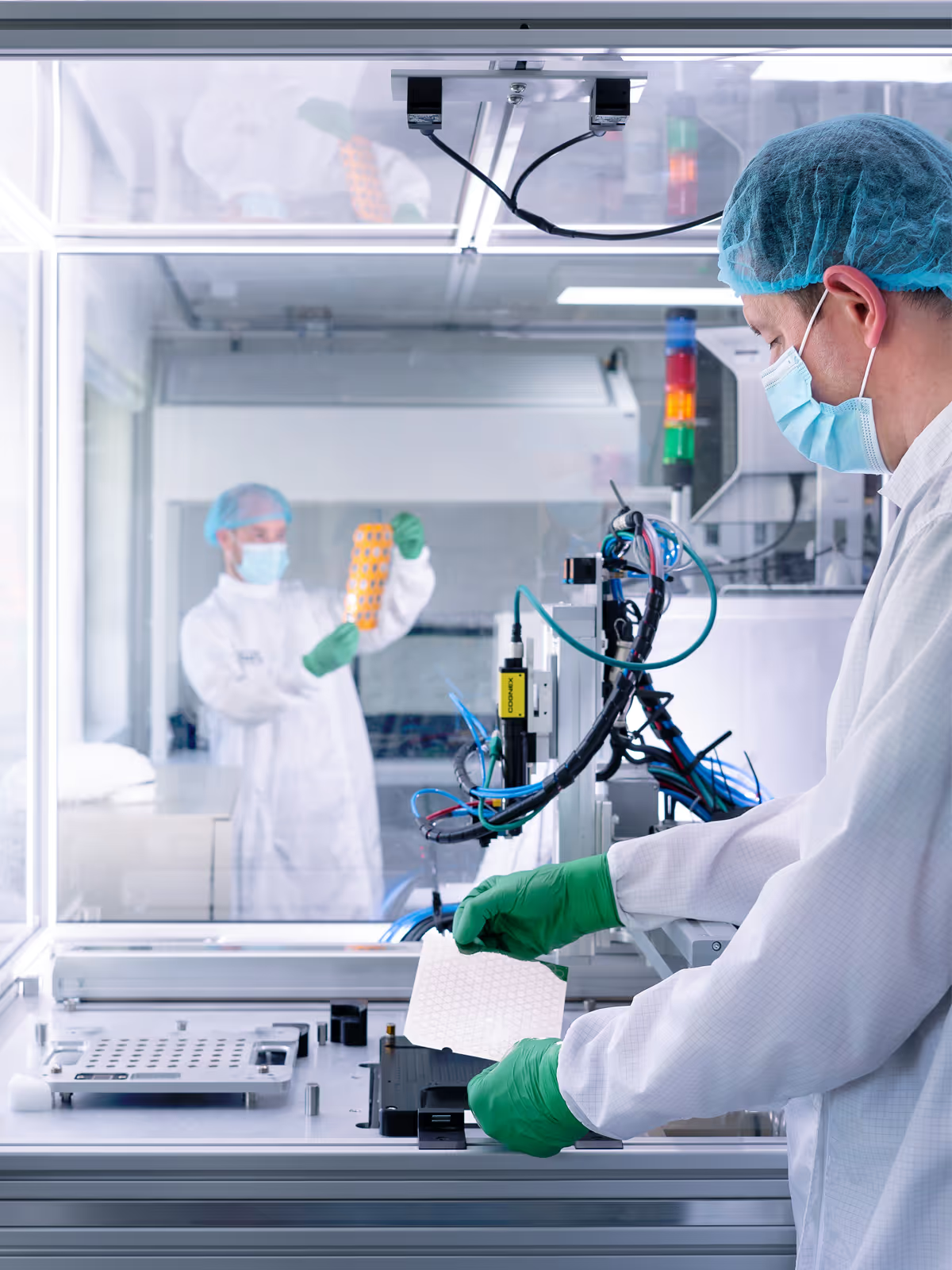
Meet some of the team
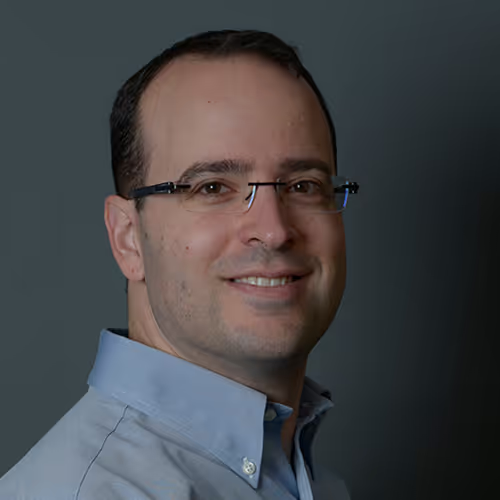
Paul Galluzzo

William Hamlyn

Jamie Collin
